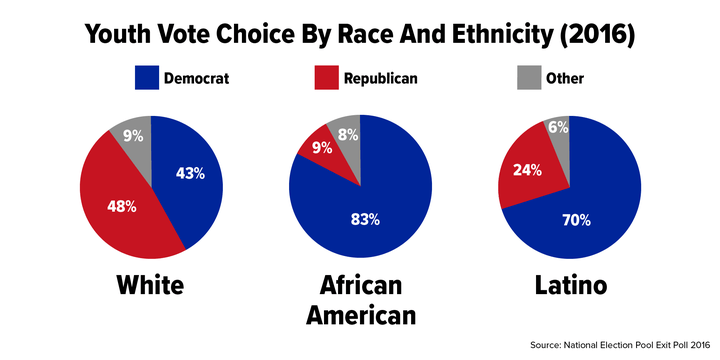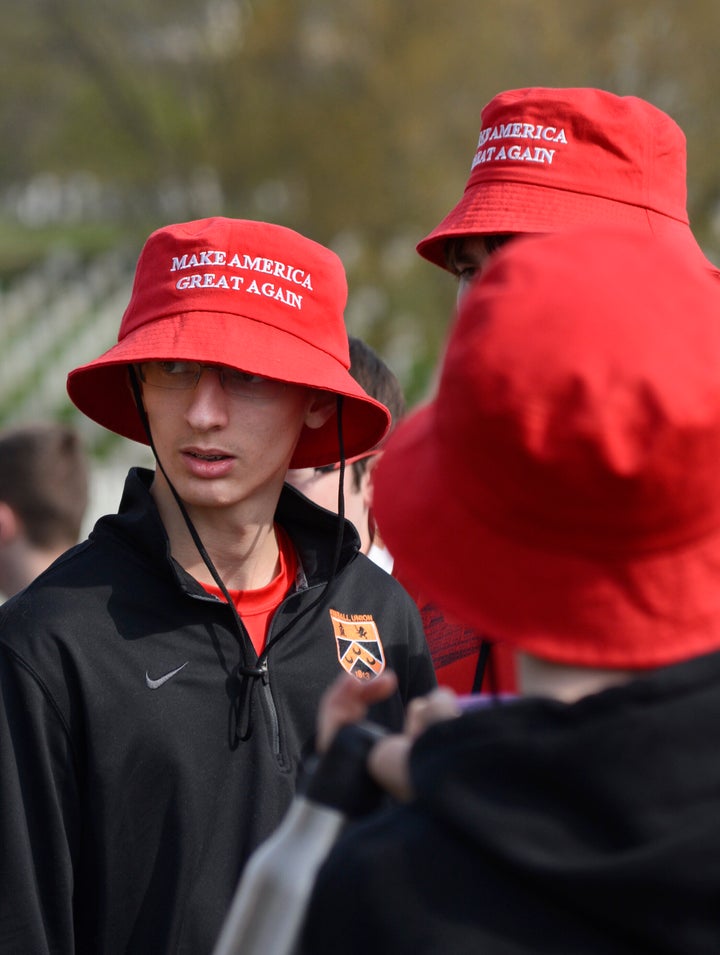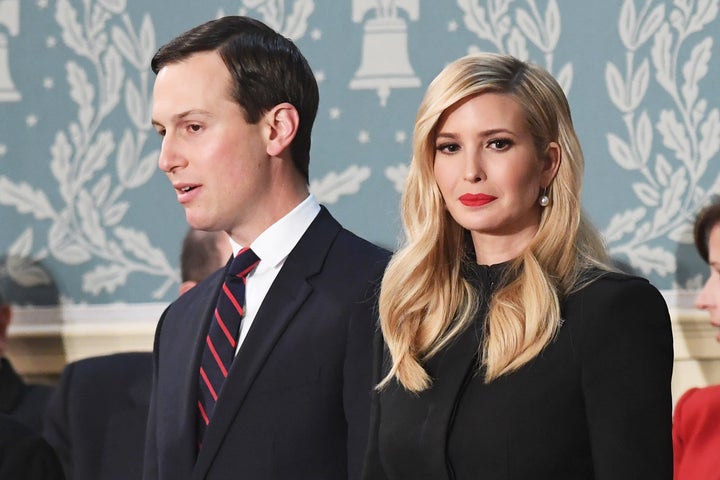Millennials are inextricably linked with the idea of social progress. The generation born between 1981 and 1996 is 40 percent people of color. More than three-quarters of millennials say immigrants strengthen the country, the majority believe humans are causing climate change and only 29 percent approve of Donald Trump’s performance as president. Millennials led many of the most prominent cultural and political movements of the last decade: Occupy Wall Street, Black Lives Matter, the “Dreamer” protests and the efforts to address campus sexual assault.
But despite being the most diverse and well-educated cohort of voters in U.S. history, the millennial generation also contains many of the country’s oldest and most persistent fault lines. In both social attitudes and voting behavior, white millennials look more like their parents and grandparents than their peers.
“When you look at the millennial generation as a whole, they seem more liberal,” said Candis Watts Smith, a political scientist and co-author of the book “Racial Stasis: The Millennial Generation and the Stagnation of Racial Attitudes in American Politics.” “When you disaggregate by race, however, you see big differences.”
Donald Trump won white voters between 18 and 29 in the 2016 election by a margin of 5 percentage points. While that age group includes both millennials and the oldest members of Gen Z, it is hardly an anomaly. Barack Obama is the only Democratic candidate to win young white voters in the last 15 years — and even then, 58 percent of white millennials said they disapproved of his job performance by the time he left office.

The same pattern holds true for social issues. Though younger whites are more liberal than their parents on climate change and same-sex marriage, they are strikingly similar on gun control and universal health care. In a 2016 survey, 46 percent of white millennials said discrimination against whites was just as big a problem as discrimination against minorities. Another, in 2018, found that on a range of social issues, including immigration, affirmative action and diversity, race was a more powerful predictor of ideology than age.
“Racial resentment is remarkably consistent among the white population over time,” said Deborah Schildkraut, a political science professor at Tufts University and the author of the 2018 study. Though their attitudes are becoming more liberal over time, white millennials’ political preferences are generally closer to those of older whites than they are to those of non-white millennials.
“Despite the changing demographics of the country and the election of Donald Trump, the number of young people who consider themselves Republicans isn’t in a death spiral,” Schildkraut said. “People who think the future is bright for Democrats shouldn’t get too comfortable with that thought.”
“I’m Not A Racist, But…”
The reasons for the ideological gap between white millennials and millennials of color are complex.
The most common explanation for social change over time is known as “contact theory.” According to this explanation, whites who interact more frequently with people of color will be more tolerant and less threatened by demographic change. Given the greater diversity of the millennial generation and Americans’ increasingly liberal attitudes toward interracial relationships, political commentators and academics have generally expected younger whites to have more moderate racial attitudes than their parents and grandparents.
This theory, however, rests on the assumption that whites are having meaningful relationships with minorities. Ryan Enos, a Harvard professor who studies racial attitudes, pointed out that public schools are no less segregated now than they were in the 1960s. Even when white students do attend diverse schools, they are more likely to be sequestered into monogrammatic “gifted and talented” programs. Though interracial relationships are indeed on the rise, they appear to be mostly between African Americans, Latinos and Asian Americans. Only 11 percent of Caucasians people marry someone of another race, the lowest rate of any racial group.
“Even as we see more diversity on TV and in workplaces and schools, America is still a wildly segregated society,” Enos said. “White people are growing up in environments that are overwhelmingly white.”
In a 2018 survey, the percentage of younger whites self-reporting that they had interracial friendships was nearly identical to that of older whites. Studies that examine “close” friendships find even greater racial separation: In 2006, researchers reviewed photos from more than a thousand marriage celebrations and found that only 3.7 percent of white couples had a black person in their wedding party.
“Quality contact between whites and other races isn’t happening very often,” Enos said. “Whites often withdraw when their neighborhood or school starts to become more diverse. Most of the examples of contact with other races resulting in more progressive attitudes come from situations where people don’t have the option of leaving.”
The gap between the attitudes of white millennials and minority millennials may be even wider than it looks. Smith noted that younger generations’ political beliefs are often assessed using survey questions about their approval of interracial marriage or their comfort with having a neighbor of a different race. While white voters’ answers to those questions have shown steady progress over time, this result may simply indicate that they are less willing to express racism overtly.
“When you ask millennials if white people have special privileges, they’re more likely than older people to say yes,” Smith said. “That looks like attitudes are getting better. But then you ask whether black people have privileges, they say yes to that too. They’re acknowledging racism, but seeing it as something that affects everyone. It’s two steps forward and one step back.”

America’s Racial Tensions Could Get Worse In The Future
The racial divide among millennials is also on track to intensify as minorities make up more of the population.
“When you show people headlines about the changing demographics of the country, they move in a conservative direction,” said Schildkraut. “Young people respond to messages about threats to white dominance in similar ways as previous generations. They feel somewhat less threatened than older whites, but they’re not as comfortable with diversity as millennials of color.”
The political implications are already upon us. For Republicans, intensifying racial tensions will mean that appeals to whiteness are likely to remain an effective strategy for scoring votes and boosting turnout. White people cast two-thirds of the millennial vote in 2016. A Reuters poll taken just before last year’s election found that support for Democrats among young people had fallen by 9 points, with white millennials showing the most dramatic drop. And the next generation, as yet, doesn’t appear any different. In the 2018 midterms, white voters between 18 and 24 were even more conservative than white voters in their late 20s and 30s.
Republicans could also find themselves with a larger base of white Americans than the dry demographic statistics suggest. Schildkraut pointed out that more than half the Hispanic population also identifies as white. U.S.-born, English-speaking Latinos were more favorable to Trump than Latinos who were born abroad and primarily speak Spanish. As it has so many times before, the Whiteness Club may simply enroll new members as politicians continue to cast African Americans and immigrants as an existential threat to the country’s future.

The millennial racial divide also has implications for Democrats. Policies explicitly aimed at assisting communities of color — such as strengthening affirmative action or distributing reparations for slavery — may seem threatening to younger white voters, making them more likely to jump ship to the Republicans.
“If Democratic politicians want to keep those voters, they’ll have an incentive to shift the conversation from race to class,” Smith said. Policies like free college or a universal basic income will disproportionately help people of color, but highlighting their racial impacts may seem like a risk for politicians who want to keep white millennials in their coalition.
“Republicans will have the incentive to put race front and center and Democrats will have the incentive to make it invisible,” Smith said.
But there is also cause for hope. Millennials are more likely to register as independents than Gen Xers or Baby Boomers, indicating that they could be more likely to swing from one party to the other. Younger voters’ more progressive attitudes on climate change, marijuana legalization and paid parental leave could also overcome race as the primary drivers of their voting behavior.
What’s clear, though, is that the millennial generation’s rise to power is not going to easily or swiftly bend the arc of history toward justice.
“We say demography is destiny, but we don’t know where it’s taking us,” Smith said. “We assume that as the country becomes browner we’ll all shift to the left. But what if some people shift all the way to the right?”
